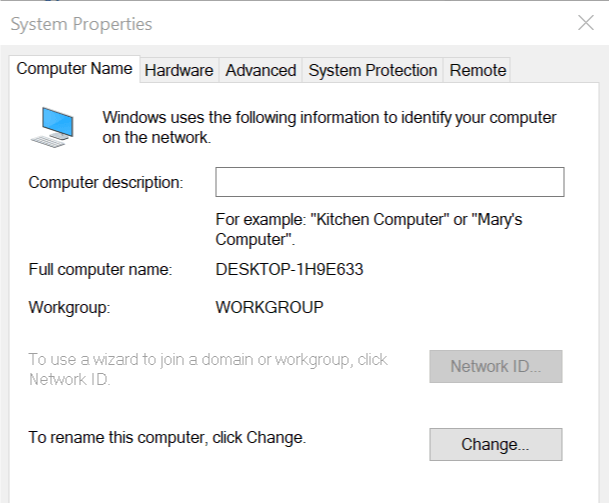Join Domain Cannot Complete This Function

netdiag tests pass, except two of my domain controllers get the follwoing
errors:
'Cannot test Secure Channel for domain 'xxxxx' to DC 'xyz'.
[ERROR_SERVICE_NOT_ACTIVE]
dcdiag on the domain controller in question passes all tests except for the
following error:
Starting test: Advertising
Warning: DsGetDcName returned information for
bigdogmedina.mmicmanhomenet.local, when we were trying to reach xyz
Server is not responding or is not considered suitable.
The DC xyz is advertising itself as a DC and having a DS.
The DC xyz is advertising as an LDAP server
The DC xyz is advertising as having a writeable directory
The DC xyz is advertising as a Key Distribution Center
The DC xyz is advertising as a time server
The DS xyz is advertising as a GC.
......................... xyz failed test Advertising
These are Windows 2003 Enterprsie domain controllers operating in a Windows
2003 native active directory domain/forest. All FSMO roles are held by the
domain controller 'xyz' except for PDC. PDC is
'bigdogmedina.mmicmanhomenet.local'
Any idea how to resolve this issue?


Join Domain Cannot Complete This Function Calculator

Comments
Join Domain Error Cannot Complete This Function
This is Post 1 of the series, and it concerns an interesting issue I worked recently. This will help in troubleshooting domain join scenarios during operating system deployment. The core issue is that a task sequence fails to join the machine to the domain during the Windows imaging process via Configuration Manager. Assessment:. The Executed Function field is the name of the actual function in your source code that is executed when the deployed function gets called. These two fields can have the same name, or the names can be different. Notice below that the first two functions have registered names that are different from the executed function names.
EventID.Net
As per M324383, this error code means that there was a failure to resolve a security account to a security identifier (SID). This typically occurs either because an account name was mistyped or because the account was deleted after it was added to the security policy setting. This typically occurs in the User Rights section or the Restricted Groups section of the security policy setting. It may also occur if the account exists across a trust and then the trust relationship is broken.
Here are some examples when this error may occur:
- M174729 - In this case, the error occurs if Exchange setup is unable to get the SID for the Microsoft Exchange Service Account. Usually this means that the Windows NT Primary Domain Controller is unavailable and setup was unable to contact any Backup Domain Controllers.
- M190822 - If the Windows NT service RPC Configuration has been removed, this problem will appear when you try to install Exchange.
- M238128 - If a group name contains a forward slash ( / ) or semicolon ( ; ), this error will appear in FrontPage.
- M247325 - In this case, the error can occur if the computer is in a workgroup and the Administrator account or the account that you are logged on with has been renamed.
- M249280 - If you receive this error after entering the password for the Exchange Server service account, note that Exchange Server 5.5 only recognizes account entries in the format of DomainAccount, not in the [email protected] format.
- M273875 and M295335 - It is not possible to promote a computer named 'Internet' to a Domain Controller. Internet is a restricted Windows 2000 computer name and cannot be used by a domain controller, a member server, or a Microsoft Windows 2000 Professional-based client that is a member of a Windows 2000 domain. This error will appear if you try the promotion.
- M308787 - This problem occurs if you delete a user account at the operating system level under which SQL Server runs.
- M312164 - The error appears if a policy is assigning a user right to an SID for a deleted user.
- M827213 - This problem occurs if the KMS database contains a Microsoft Windows NT Security Identifier (SID) that is not mapped. An SID may not be mapped if the Windows NT user account that is associated with the SID has been deleted from the domain, but the SID still exists in the cryptographic service provider (CSP) database of KMS. Generally, this problem occurs if the Windows NT user account of a user who is a KMS administrator is deleted before the KMS Administrator permissions are removed from this user account.
- M839115 - In this case the problem is caused by an Antivirus program that is not Exchange aware.
- M883271 - The problem can appear if you have account names that use non-ASCII characters, such as ö and é.
See the links below for more information on this error.
EventID.Net
While people are used to see user names and assign rights and permissions using the friendly 'user name', internally, Windows is using the SID (security identifier) to intentify the users and the groups. A user SID looks something like S-1-5-21-197031408-981208221-617630493-1079. This way, we can change the user name and Windows does not need to adjust rights and permissions as the SID remains the same.
Now, some applications are not that smart to use just the SIDs and use the actual user or group name. If this is changed, then they are not able to find them and they generate this error. In other circumstances, if the user is deleted, the deletion is not propagated to all the Windows settings (a common one is the Group Policies) and when the applications that use these settings run, they are not able to find the user.
There is not much one can do to fix this as it is not an actual error but rather a warning. However, once one understands the cause of this error, it can enable logging or lookup up various configurations (depending on the application reporting this problem) and identify the missing users or groups.
Symbolic code: ERROR_NONE_MAPPED
Join Domain Cannot Complete This Function Based
Cannot complete this function.' Not very helpful or descriptive so it's tough to troubleshoot. Any ideas WHY we cannot get a 2012 server on the network? We're not trying to make it a DC.just a domain member. Quizlet makes simple learning tools that let you study anything. Start learning today with flashcards, games and learning tools — all for free.